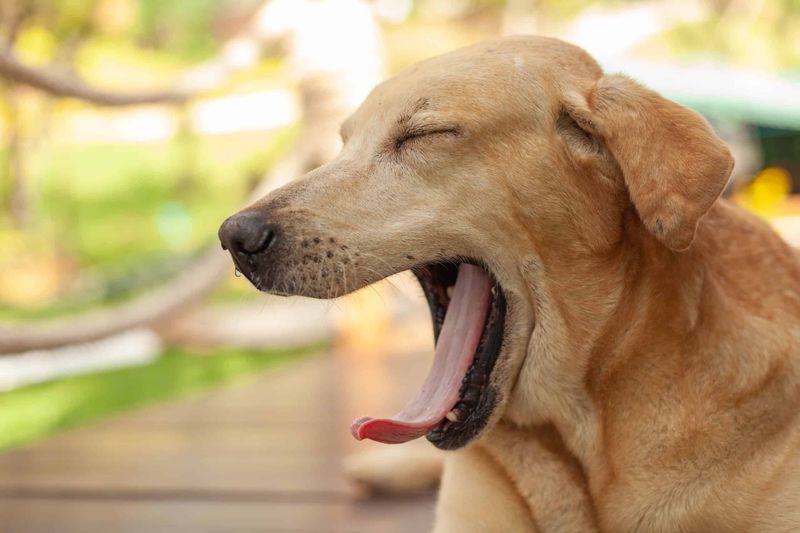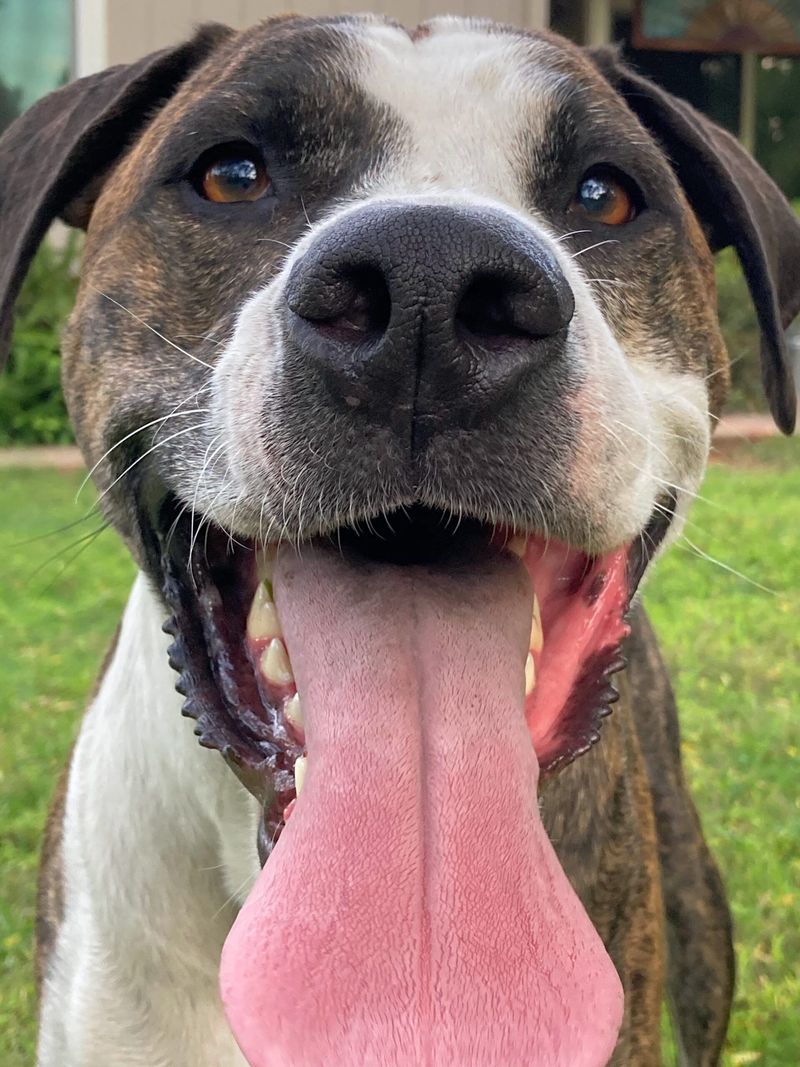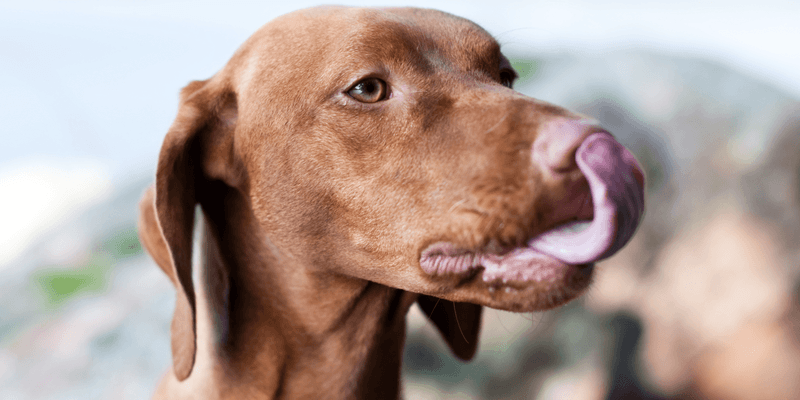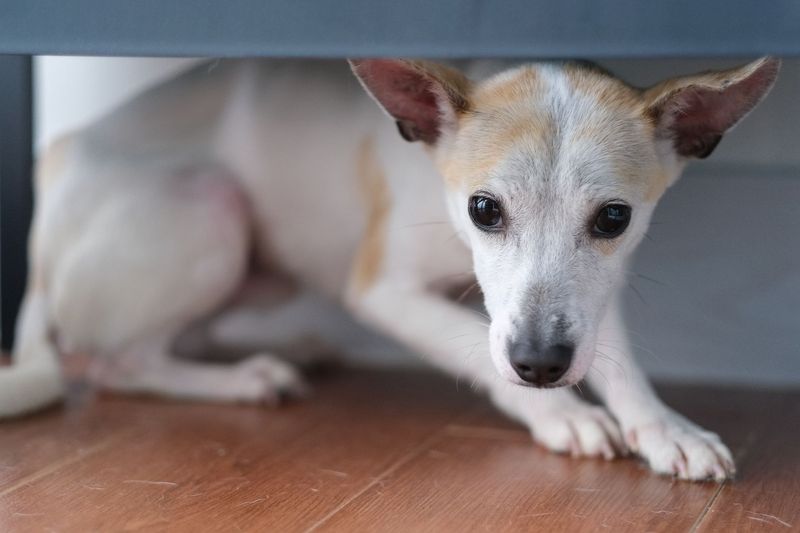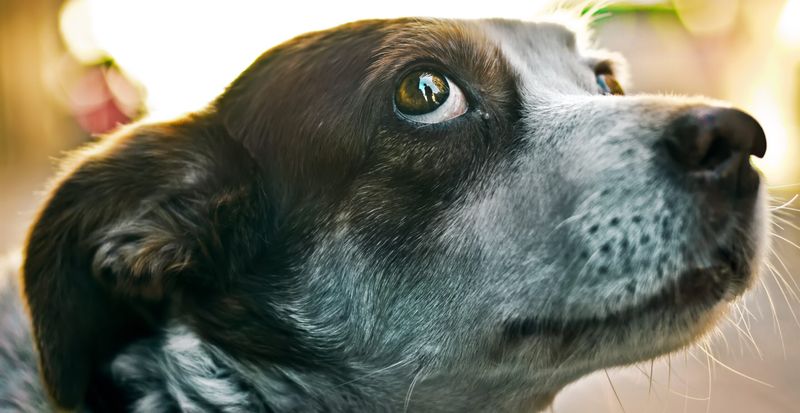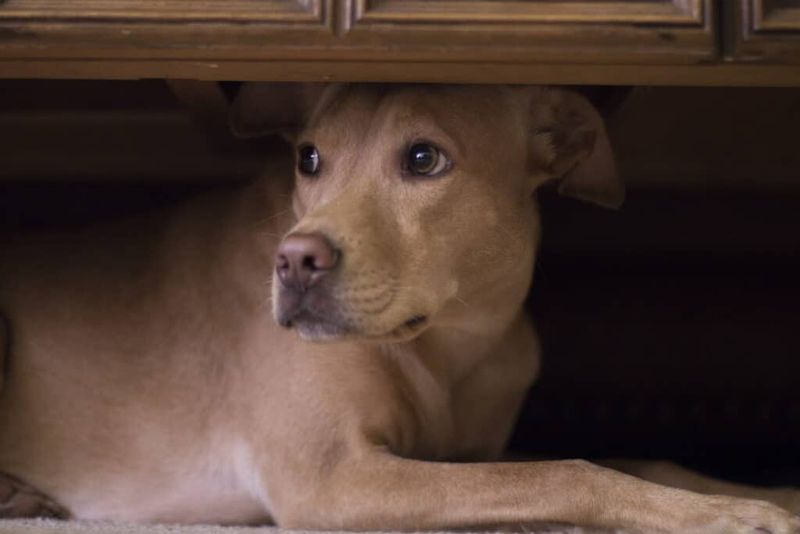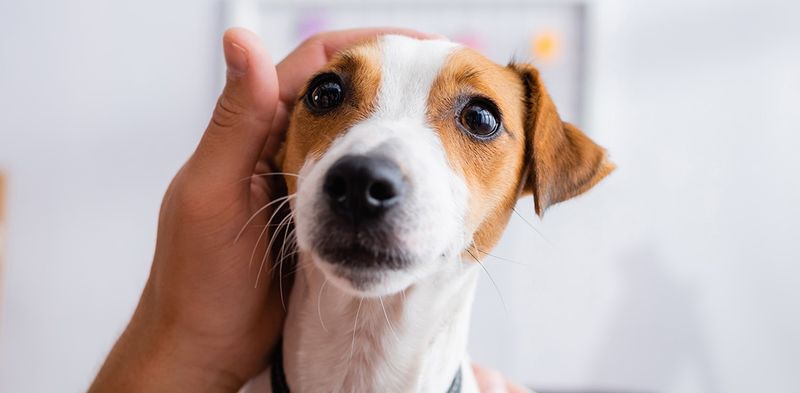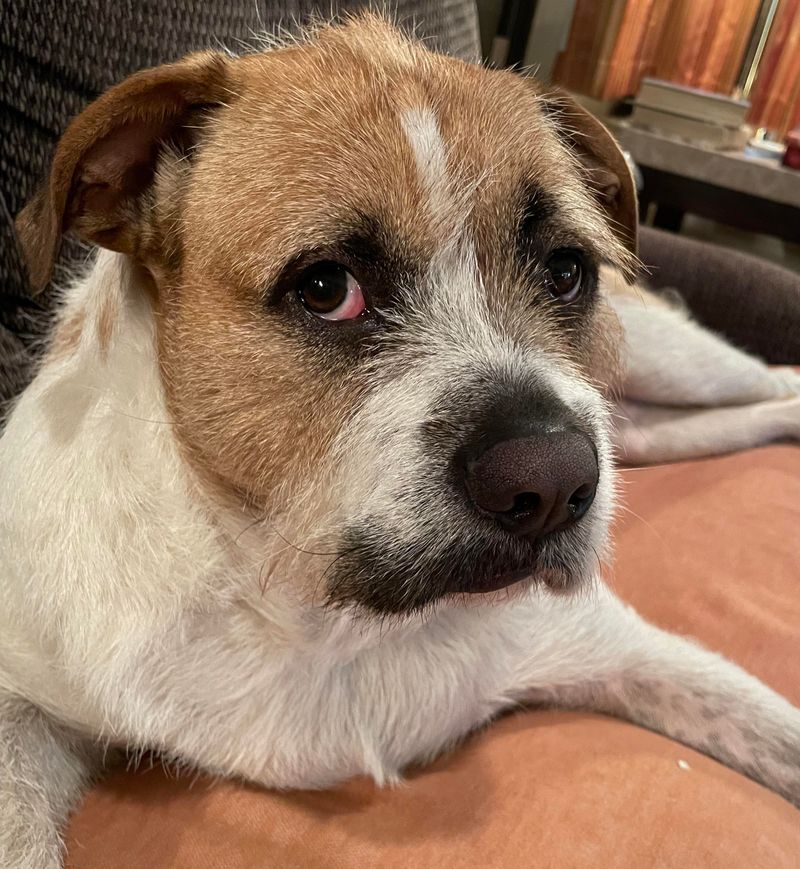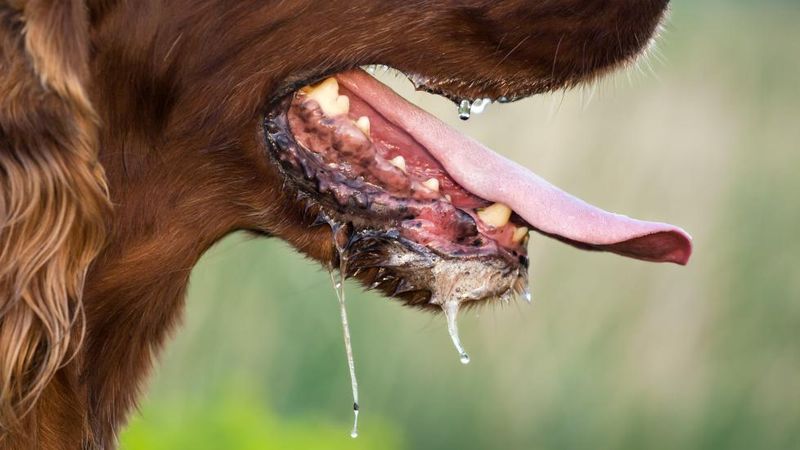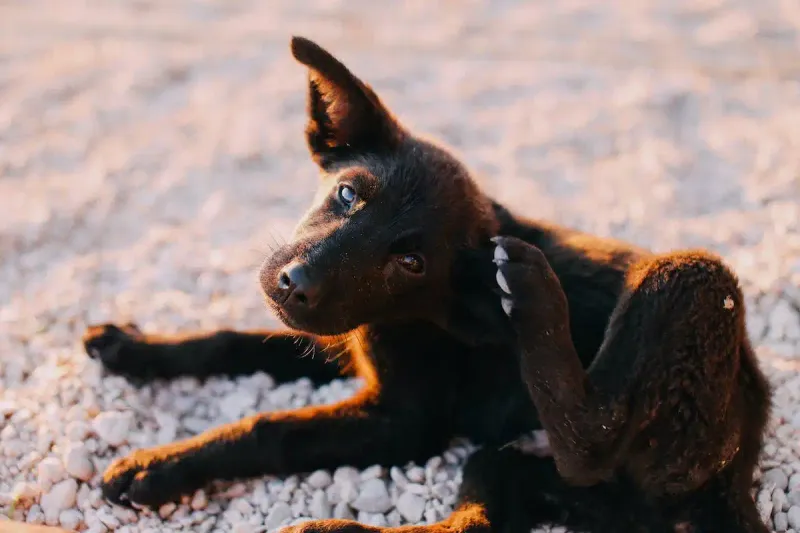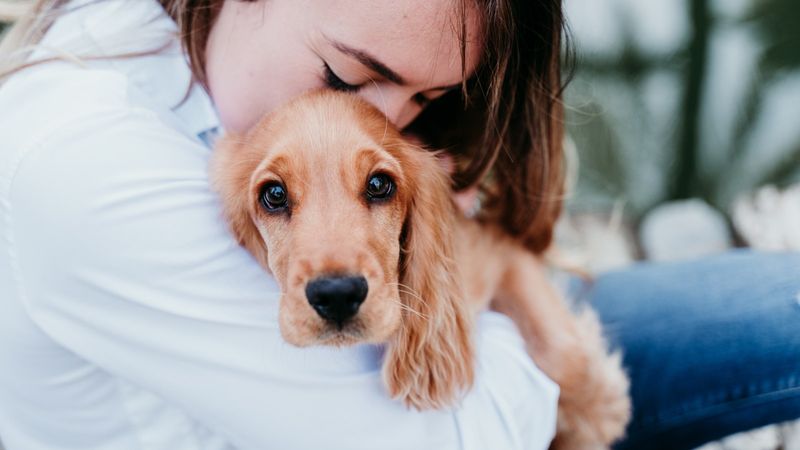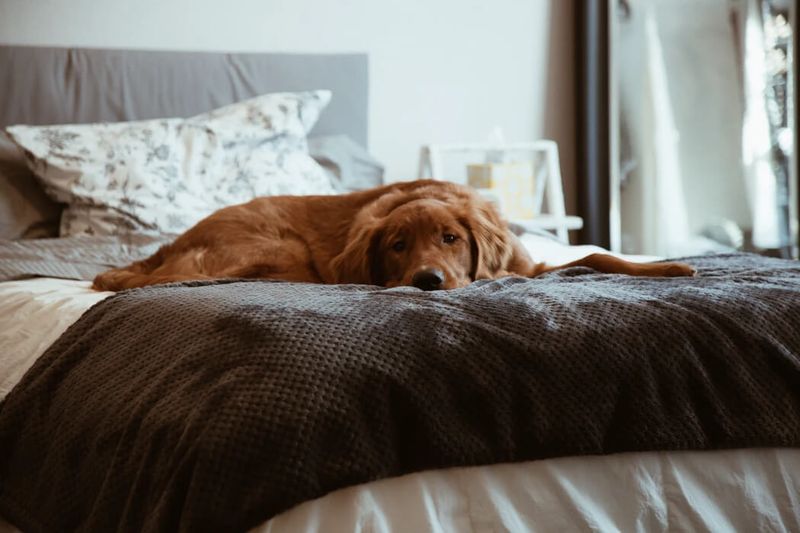Dogs, like humans, experience stress in various situations. However, they often hide their stress behind subtle signs that many pet owners might overlook. Understanding these signals is crucial for ensuring your furry friend’s well-being and happiness. Here are 16 subtle signs indicating your dog may be stressed, even if they’re trying to hide it.
Excessive Yawning
You might think your dog is just tired when you see them yawning frequently. However, yawning can be a subtle sign of stress. When dogs feel anxious, they often yawn as a calming signal to themselves and others. If you notice excessive yawning outside of bedtime, your dog might feel uneasy.
Pay attention to surrounding circumstances. Are they in a new environment or around unfamiliar people? This behavior often accompanies transitions or loud noises.
Understanding this can help you provide comfort, whether it’s giving them space or offering a favorite toy for distraction.
Panting When Not Hot
Panting is a common behavior in dogs, usually associated with heat. But when your dog pants excessively in a cool room, it’s a red flag. Panting is their way of coping with stress or anxiety.
Observe the context in which this occurs. Are they panting after a new guest enters your home? Or perhaps during a storm? Such situations can provoke anxiety.
Offering a calm environment and reassuring presence can help. Your dog will appreciate your understanding of their unspoken concerns and feel more secure in stressful moments.
Licking Lips Frequently
Dogs often lick their lips after meals, but frequent licking without food in sight can signal stress. This subtle sign is often overlooked but crucial to understand.
Lip licking might occur during car rides or vet visits, where anxiety levels rise. It’s a self-soothing mechanism dogs use when they feel uneasy or nervous.
By recognizing this behavior, you can take steps to calm your furry companion. Gentle petting or speaking softly can reassure them, helping to alleviate their hidden worries.
Avoiding Eye Contact
In the canine world, avoiding eye contact is not just about being shy. It can be a sign of stress or discomfort. When a dog feels threatened or anxious, they may turn their gaze away.
This behavior can manifest around strangers or during scolding. It’s their way of saying they’re uncomfortable.
To help, provide a safe space and approach them with patience. A calm and gentle environment encourages them to open up and feel at ease.
Sudden Shedding
While shedding is normal, sudden or excessive shedding might signify stress in dogs. It’s their body’s response to anxiety, often triggered by changes in routine or environment.
Notice if this happens during travel or after moving homes. It’s a physical reaction to emotional stress.
Grooming routines can ease this response. Regular brushing not only helps manage fur but also provides comforting physical contact, reinforcing the bond between you and your dog.
Loss of Appetite
A sudden change in appetite can be a telling sign of stress. If your dog, once eager for meals, now shows disinterest, stress might be the culprit.
This can occur due to changes in their environment, such as a new pet or family member. It’s their way of expressing unease.
To help, maintain consistent meal times and create a peaceful eating area. This stability can provide the comfort and reassurance they need to regain their appetite.
Compulsive Chewing
Chewing is natural, but compulsive chewing can indicate underlying stress. If your dog targets shoes or furniture, it’s likely more than just a playful habit.
This behavior often arises during times of separation from loved ones or boredom. It’s a dog’s way of coping with feelings of anxiety or frustration.
To mitigate this, provide appropriate chew toys and engage in regular playtime. This not only redirects their energy but also strengthens your bond.
Hiding or Isolation
When a sociable dog suddenly prefers solitude, it may be a sign of stress. Hiding or seeking isolation is their way of escaping overwhelming situations.
This change can occur during loud events like fireworks or parties, when the noise becomes unbearable. Their sanctuary becomes a refuge.
Creating a quiet and safe space can help. By offering a comforting area, you allow them to recharge and face stressors with more confidence.
Pacing Restlessly
Restless pacing is more than just an energetic burst; it’s a sign of inner turmoil. Dogs often pace when they feel anxious or stressed, unable to find peace.
This can happen when anticipating something unknown or during separations from their favorite humans. They are searching for comfort in motion.
You can help by providing mental stimulation through toys or training exercises. Engaging their mind can distract from stress and bring calmness.
Whining or Whimpering
Vocalizations like whining are a dog’s way of expressing distress. If your dog whimpers frequently, it could mean they’re stressed or anxious.
This behavior often occurs when they’re left alone or around unfamiliar settings. It’s their call for comfort and reassurance.
Responding with attention and care can alleviate this stress. Consistent, positive interactions encourage feelings of security and contentment.
Excessive Drooling
While drooling is normal for certain breeds, excessive drooling can indicate stress, especially if it occurs suddenly. Drooling in dogs often parallels nervousness or unease.
Look for triggers like car rides or vet visits, which might be causing anxiety. Recognizing these patterns helps in addressing their hidden discomfort.
Providing calm and familiar settings can reduce stress-induced drooling. Through understanding, you offer them a more relaxed atmosphere.
Tail Tucked Between Legs
A tail tucked between the legs is a classic sign of fear or anxiety in dogs. This body language communicates their insecurity.
It often happens in crowded places or new environments, where they feel threatened or overwhelmed. The tucked tail serves as a defense mechanism.
Creating a reassuring environment with familiar scents and sounds can alleviate this fear. By acknowledging their discomfort, you help build their confidence.
Ears Pinned Back
Pinned-back ears are often seen in stressed or anxious dogs. This subtle signal indicates discomfort or fear in response to their surroundings.
You might notice this when they’re around loud noises or unfamiliar faces. It’s an instinctive reaction to potential threats.
By providing reassurance and reducing exposure to stressors, you can help ease their anxiety. They find solace in your calm and understanding presence.
Frequent Scratching
Scratching is typical for dogs, but frequent, intense scratching without a medical reason can be stress-related. It’s a physical outlet for their anxiety.
Consider potential stressors like new visitors or changes in routine. These can manifest as skin irritation or obsessive scratching.
Offering distractions such as interactive play or soothing baths can redirect their focus. By reducing stress, you promote healthier habits.
Clingy Behavior
While some dogs are naturally affectionate, sudden clinginess can hint at underlying stress. If your dog is sticking to you more than usual, they might be seeking comfort.
This behavior can arise during thunderstorms or when they’re feeling insecure. Their clinginess is a request for reassurance.
Respond with affection and consistency. Your presence and routine provide the stability they need to feel safe and loved.
Distant or Aloof
When a normally affectionate dog becomes distant, it may be signaling stress. Aloofness can be their way of coping with an overwhelming situation.
This behavior might appear during family changes or after a traumatic event. It’s their method of self-preservation.
Patience and gentle encouragement can help bridge the gap. By respecting their space, you allow them to open up when they’re ready.

